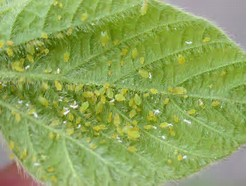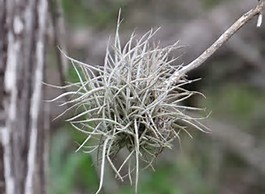Gillen Pest Control can help you keep you trees healthy and insect free.
With the use of our high power rigs we are able to reach to top of almost any tree. We can dormant oil your fruit bearing trees in the late winter to eliminate the over-wintering insects and treat for those persistent web worms in the fall. Whatever insect or fungus is invading your tree, we can help.
Aphids and Ball Moss are two very common calls we receive.
 Aphids
Aphids
There are several different species of aphids. The common ones we deal with are the Crepe Myrtle aphid, the Black-marginal aphid and the Yellow Pecan aphid.
Gillen Pest Control has a program that can help control aphids and prevent the sticky mess they make. Give us a call to discuss a treatment that will work for you.
Crapy Myrtle AphidCrepe Myrtle Aphid
This aphid specifically infest crepe myrtles – hence the name. The adult and nymph stage of this insect suck plant juices from the underside of leaves they infest. The sticky substance eliminated by the aphid is called “honeydew”. Leaves coated with honeydew become infested with a fungus called sooty mold, which produces a dry-looking black coating on the leave surface. Heavily discolored leaves drop prematurely.
Black-margined AphidBlack-margined Aphid/Yellow Pecan Aphid
These aphids live on pecans. They remove sap from the tree’s leaves. Heavily infested trees have leaves that become coated with honeydew. Honeydew helps with the development of the sooty mold fungus. This black layer reduces the leaves ability for photosynthesis. Many times items under infested trees have a sticky film on them.
 Ball MossBall Moss
Ball MossBall Moss
Are your trees infested with a moss that looks like this?
Ball moss is not actually a moss. It is an epiphyte, a bromeliad. It has a profusion of fleshy slender round leaves, which stick out in all directions giving it a spiky ball look. It is capable of getting its nutrients and moisture from the air in order to survive. It is not known to kill its host (usually trees) but it may become so dense that it possibly restricts normal bud development.
Ball moss blooms every spring, resulting in tiny purple flowers which form a seed pod that bursts allowing the seeds to spread. The spring when the plant is blooming is the time for treatment. It may take several years of spraying to completely control the ball moss.
